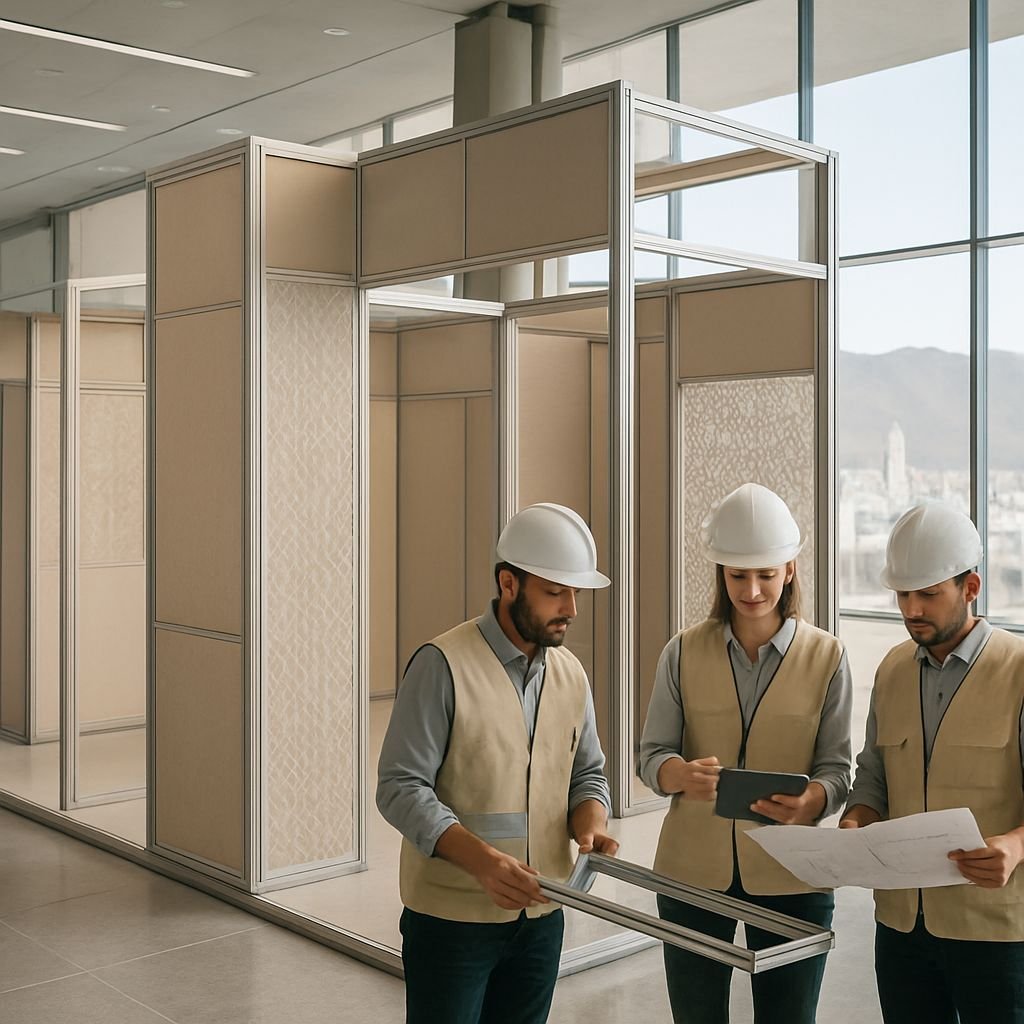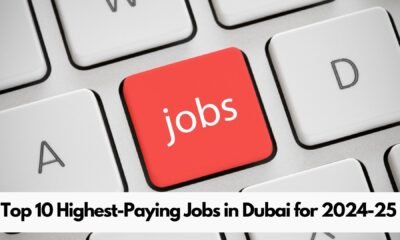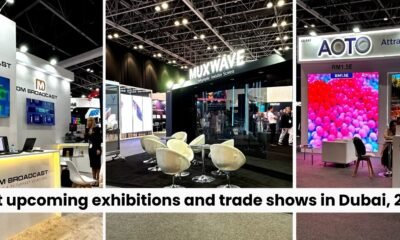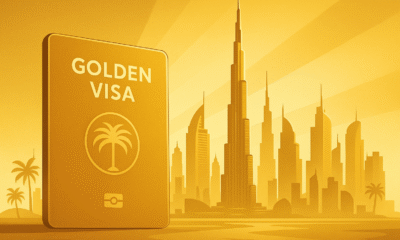Blog
How Can Exhibition Stand Builders in Oman Boost My Booth Design?

Introduction to Exhibition Stand Building in Oman
Creating a memorable presence at trade shows and exhibitions requires careful coordination of many elements. From concept development to final installation, each step influences how visitors perceive a brand. In Oman, the market for exhibition displays has grown alongside the expansion of international events, prompting many businesses to seek professional expertise. Understanding the process helps organizers set realistic expectations, manage resources, and achieve a cohesive visual story. This guide outlines the essential phases of stand construction, highlights common challenges, and offers practical advice for selecting the right specialists.
Strategic Planning and Project Management
Effective planning begins with a clear definition of objectives. Organizers should ask what messages need to be communicated, which products deserve focus, and how the space will be navigated. A detailed brief assists designers in translating goals into tangible layouts. Project timelines typically include milestones for concept approval, material procurement, fabrication, and on‑site assembly. By allocating buffer periods for unforeseen issues, the risk of last‑minute changes diminishes. When the brief aligns with realistic schedules, the entire team can operate with confidence, ensuring that deadlines are met without compromising quality.
Understanding Local Regulations
Exhibition venues in Oman often have specific guidelines regarding fire safety, structural load, and accessibility. Compliance with these rules protects both the exhibitor and attendees. Engaging a knowledgeable consultant early in the process can streamline permit applications and avoid costly revisions. In many cases, the consultant will liaise directly with venue officials, providing the necessary documentation and ensuring that all safety standards are satisfied.
Design Development and Creative Direction
Translating a brand’s identity into a three‑dimensional experience demands creativity and technical skill. Designers explore various themes, color palettes, and material finishes to craft an immersive environment. Mood boards, 3D renderings, and scale models help stakeholders visualize the final outcome before construction begins. Iterative feedback loops refine the concept, balancing aesthetic ambition with practical constraints such as budget and space limitations. A well‑executed design not only attracts foot traffic but also reinforces brand recall long after the event concludes.
Exhibition stand builders in Oman
When the project moves from sketch to reality, partnering with experienced professionals becomes crucial. Exhibition stand builders in Oman bring a blend of craftsmanship and logistical know‑how, ensuring that each component fits together seamlessly. Their expertise includes managing subcontractors, coordinating deliveries, and overseeing on‑site installation, which reduces the likelihood of errors and delays.
Material Selection and Fabrication Techniques
Choosing the right materials influences both visual impact and durability. Lightweight aluminum frames provide structural stability while remaining easy to transport. High‑resolution graphics printed on tension fabric create vivid backdrops that resist wrinkles. Sustainable options, such as recycled wood panels or biodegradable foam, appeal to environmentally conscious exhibitors. Fabricators employ CNC machining, laser cutting, and modular assembly to achieve precision and repeatability. By selecting materials that align with the design intent and logistical requirements, the stand can be assembled quickly and dismantled for reuse at future events.
Exhibition stand contractors in Oman
Complex projects often require coordination among multiple trades. Exhibition stand contractors in Oman specialize in synchronizing electrical work, lighting design, and audiovisual integration, ensuring that all systems operate harmoniously. Their project management approach includes detailed sequencing charts that map each task, reducing the chance of conflicts on the exhibition floor.
Construction, Installation, and On‑Site Management
During the construction phase, precision is paramount. Fabricated components are inspected for dimensional accuracy before being packed for transport. On the day of installation, a dedicated crew follows a pre‑planned layout, positioning each element according to the design drawings. Real‑time problem solving is essential; for example, adjusting anchoring points to accommodate uneven flooring. After the exhibit opens, a maintenance plan addresses any wear, such as tightening loose fittings or replacing damaged graphics, to preserve a polished appearance throughout the event.
Exhibition stand design company in Oman
Creative agencies that also manage build processes provide a seamless experience. Exhibition stand design company in Oman offers integrated services from concept to completion, reducing the need for multiple point‑of‑contact handoffs. Their holistic approach ensures that design intent is preserved during fabrication and installation, delivering a cohesive final product.
Logistics, Shipping, and Storage Solutions
Efficient logistics underpin a successful exhibition presence. Detailed packing lists and custom crates protect delicate components during transit. Freight forwarders experienced with trade show shipments handle customs clearance, ensuring that all items arrive on schedule. For exhibitors who attend multiple shows, modular designs enable easy reconfiguration and storage, minimizing warehouse space and reducing long‑term costs. Clear labeling and inventory tracking further streamline the unpacking process, allowing the installation team to locate and assemble each piece swiftly.
Technology Integration and Interactive Features
Modern exhibitions increasingly rely on technology to engage visitors. Interactive touchscreens, augmented reality experiences, and live data visualizations can transform a static booth into a dynamic showcase. Integrating these elements requires careful planning of power distribution, cable management, and network connectivity. Designers must allocate space for equipment while maintaining an uncluttered aesthetic. When executed thoughtfully, technology not only draws attention but also provides measurable insights into visitor behavior, supporting post‑event analysis.
Exhibition booth design company in Oman
Specialized firms excel at marrying creative concepts with cutting‑edge tech. Exhibition booth design company in Oman collaborates closely with hardware vendors to ensure compatibility and reliability, delivering immersive experiences that resonate with diverse audiences.
Sustainability and Eco‑Friendly Practices
Environmental responsibility has become a key consideration for many exhibitors. Selecting reusable components, opting for low‑VOC finishes, and designing for disassembly support circular economy principles. Some builders incorporate solar‑powered lighting or LED systems to reduce energy consumption. By documenting the sustainable aspects of a stand, exhibitors can communicate their commitment to green initiatives, enhancing brand perception among environmentally aware attendees.
Selecting the Right Exhibition Partner
Choosing a partner that aligns with project goals involves evaluating several criteria. Portfolio quality demonstrates the ability to deliver on diverse design challenges. Client testimonials reveal reliability and communication style. Certifications in safety standards indicate adherence to best practices. Additionally, transparent cost structures and clear timelines help prevent misunderstandings. Conducting site visits to previous installations can provide tangible evidence of workmanship and durability.
Exhibition booth builder in Oman
For organizations seeking a hands‑on builder with a track record of successful projects, Exhibition booth builder in Oman offers comprehensive services that span from initial concept sketches to final teardown, ensuring a smooth experience from start to finish.
Emerging Trends in Exhibition Stand Design
Current trends emphasize flexibility, immersive storytelling, and data‑driven personalization. Modular structures allow exhibitors to adapt the same core components for different booth sizes, maximizing ROI. Biophilic design-incorporating natural elements such as living walls or water features-creates calming environments that stand out amidst bustling exhibition halls. Meanwhile, real‑time analytics gathered from interactive displays enable exhibitors to tailor content on the fly, enhancing relevance for each visitor.
Conclusion
By understanding each phase of the exhibition stand creation process, organizers in Oman can make informed decisions that enhance brand visibility and visitor engagement. From strategic planning to sustainable material choices, every detail contributes to a successful showcase. When the right expertise is applied, the result is a compelling environment that reflects the brand’s values and objectives. For those seeking further inspiration, exploring the work of Stands Bay provides valuable examples of innovative stand solutions.
Blog
Looking for a GCS Crypto Currency Licence and Registration in Dubai?

Looking for a GCS Crypto Currency Licence and Registration in Dubai?
Welcome to our guide on Crypto currency license in Dubai. At GCS, we specialize in providing top-quality Crypto currency license services to meet your needs.
Why Choose Our Crypto currency license Services?
Our team of experienced professionals understands the importance of quality Crypto currency license in Dubai. We pride ourselves on delivering exceptional results and customer satisfaction.
Our Approach to Crypto currency license
We take a comprehensive approach to Crypto currency license, ensuring that every aspect of our service meets the highest standards. Our process includes:
- Thorough consultation to understand your specific needs
- Customized solutions tailored to your situation
- Ongoing support throughout the process
- Transparent communication at every step
Important Resources
For more information about Crypto currency license, check out these valuable resources:
- Crypto Currency Licence in Dubai
- Dubai Crypto Currency Licence
- Crypto Currency Registration in Dubai
- Dubai Crypto Currency Registration
- GCS Crypto Currency Licence in Dubai
Get Started Today
Ready to experience the difference our Crypto currency license services can make? Contact GCS today to schedule your consultation. Our team is standing by to answer your questions and help you get started on the path to success.
Don’t wait – reach out to us today and discover why so many people in Dubai trust GCS for their Crypto currency license needs.
Blog
Best Crypto currency license Services in Dubai

Best Crypto currency license Services in Dubai
Welcome to our guide on Crypto currency license in Dubai. At GCS, we specialize in providing top-quality Crypto currency license services to meet your needs.
Why Choose Our Crypto currency license Services?
Our team of experienced professionals understands the importance of quality Crypto currency license in Dubai. We pride ourselves on delivering exceptional results and customer satisfaction.
Our Approach to Crypto currency license
We take a comprehensive approach to Crypto currency license, ensuring that every aspect of our service meets the highest standards. Our process includes:
- Thorough consultation to understand your specific needs
- Customized solutions tailored to your situation
- Ongoing support throughout the process
- Transparent communication at every step
Important Resources
For more information about Crypto currency license, check out these valuable resources:
- Crypto Currency Licence in Dubai
- Dubai Crypto Currency Licence
- Crypto Currency Registration in Dubai
- Dubai Crypto Currency Registration
- GCS Crypto Currency Licence in Dubai
Get Started Today
Ready to experience the difference our Crypto currency license services can make? Contact GCS today to schedule your consultation. Our team is standing by to answer your questions and help you get started on the path to success.
Don’t wait – reach out to us today and discover why so many people in Dubai trust GCS for their Crypto currency license needs.
Blog
Dubai 2025: The Tech Revolution Unveiled – From Smart Cities to AI‑Driven Innovation
Dubai has always been a city that looks toward the future. From its iconic skyline to its ambitious plans for sustainability, the spirit of innovation is woven into every project. In 2025, the city is stepping into a new era where technology is not just a tool but a living system that powers everyday life, reshaping how residents work, travel, shop and connect.
1. The Birth of a Smart City
When most people think of a smart city, images of connected traffic lights, billboards that update in real time, and drones delivering packages come to mind. Dubai’s journey began with the Smart Dubai programme, which set out to create a city where digital services are delivered more efficiently and transparently. The programme’s core goals were:
- Digital identity for citizens and residents.
- Integrated data platform for city services.
- Smart infrastructure that adapts to real‑time needs.
- Encouragement of start‑ups and tech investment.
These pillars laid the groundwork for a city that can react to the needs of its people instantly, making daily life smoother and more rewarding. This foundation also helped launch a wave of projects that pushed Dubai ahead of the global curve.
2. Artificial Intelligence Takes the Driver’s Seat
Artificial Intelligence (AI) has become the engine behind many of Dubai’s newest achievements. From predictive policing that helps keep streets safe to AI‑powered logistics that reduce delivery times, the technology is changing every sector.
Transportation and Mobility
The Dubai Metro’s robots now run maintenance checks without human intervention. Autonomous buses navigate the sidewalks, delivering passengers between business districts with minimal delays.
Healthcare Revolution
AI algorithms predict potential health risks based on lifestyle and genetic data, allowing doctors to intervene early. Virtual consultations powered by AI chatbots provide instant medical advice, freeing up specialists for complex cases.
Public Safety and Law Enforcement
Machine‑learning models detect unusual crowd movements and highlight potential security threats before they grow. Law‑enforcement drones patrol the city, ensuring that emergency response is swift and efficient.
By embedding AI into everyday services, Dubai turns its metropolis into a responsive organism that learns and grows with its people.
3. Blockchain: The Invisible Ledger of Modern Life
While blockchain has made headlines in finance, its real power lies in its transparency and security. Dubai has leveraged the technology to create tamper‑proof systems across government, healthcare, and logistics.
One notable example is the Digital Health Pass—an immutable record that tracks vaccination, medical history, and health alerts. Similarly, property transactions are recorded on a blockchain, cutting down paperwork and fraud while speeding up closing times.
These applications not only add value for the government but also provide a sense of trust for residents and investors alike.
4. The Architecture of Tomorrow: Smart Skyscrapers and Infrastructure
Dubai’s skyline is home to more than just office space; it is a living laboratory for sustainable design. Buildings now incorporate:
- Energy Harvesting Windows: Transparent solar panels that provide electricity to the building’s systems.
- Responsive Facades: Skin that adjusts to sunlight and temperature, keeping interiors comfortable while lowering energy usage.
- Water Recycling Systems: On‑site purification that reduces municipal water demand.
These features not only reduce carbon footprints but also lower operational costs, making high‑rise living accessible to a wider audience.
5. Technology Hubs and the Start‑up Ecosystem
The city’s growth is driven partly by its vibrant ecosystem for technology start‑ups. Numerous incubators provide mentorship, financing, and access to venture capital. Key areas of focus include:
- FinTech solutions simplifying banking for the cloud‑native generation.
- EdTech platforms that bring personalized learning to anyone on the move.
- HealthTech that integrates wearable data with AI diagnostics.
- Supply chain technology creating end‑to‑end traceability.
Dubai’s open data initiatives give start‑ups a wealth of information—making it easier to test and scale products that fit the local market and can also export worldwide.
6. The Human Touch: Building Tech Culture
Innovation is only as good as the people behind it. Dubai invests heavily in human capital: from schools teaching coding from kindergarten to higher‑education programmes that put AI and blockchain at the forefront.
Workshops lead residents to create their own mini‑projects, giving them a sense of ownership over the urban digital narrative. These efforts foster a public appetite for technology, ensuring that the next wave of ideas will come from diverse voices.
7. Looking Ahead: What Lies Beyond 2025?
The ambition never stops. While 2025 has delivered massive strides, the sights are now set on a more interconnected yet sustainable system.
- Zero‑carbon buildings enabled by nanomaterials.
- Hyper‑fast transport links into the desert, turning islands into bustling hubs.
- Advanced AI that helps residents live healthier lifestyles by predicting needs.
- Fully autonomous commercial districts where order and efficiency thrive.
These future projects are based on data collected in real time, meaning the city can adapt quickly to changing aspirations.
Dubai’s transformation demonstrates how creating a digital ecosystem, backed by supportive policy, can accelerate progress for all residents and set a global example for future city planning.
Want to read more about how Dubai is turning skyscrapers into AI hubs? Explore our story on skyscraper AI transformation.
Curious how the city’s smart system uses AI and blockchain to improve everyday life? Dive into the pulse of Dubai’s tech evolution.
Still wondering how visionary dreams turned into a reality of smart cities and AI? Discover the journey of Dubai’s tech pulse.
-

 Business2 years ago
Business2 years agoTop 10 Highest-Paying Jobs in Dubai for 2024-25
-

 Business2 years ago
Business2 years agoTop 10 Business Opportunities in Dubai for 2024-2025
-

 Business2 years ago
Business2 years agoBest upcoming exhibitions and trade shows in Dubai, 2024
-

 Business1 year ago
Business1 year agoHow Much Does It Cost to Open a Company in Dubai in 2024?
-

 Sports2 years ago
Sports2 years agoTop 5 Upcoming International Sporting Events in Dubai (2024-2025)
-

 Blog2 years ago
Blog2 years agoPlaces to Visit in Ras Al Khaimah
-

 Latest4 months ago
Latest4 months agoDubai Golden Visa 2025: Everything You Need to Know About Eligibility, Benefits and Application Process
-

 Business2 years ago
Business2 years agoTop 5 Networking Events for Businesses in Dubai in 2024



